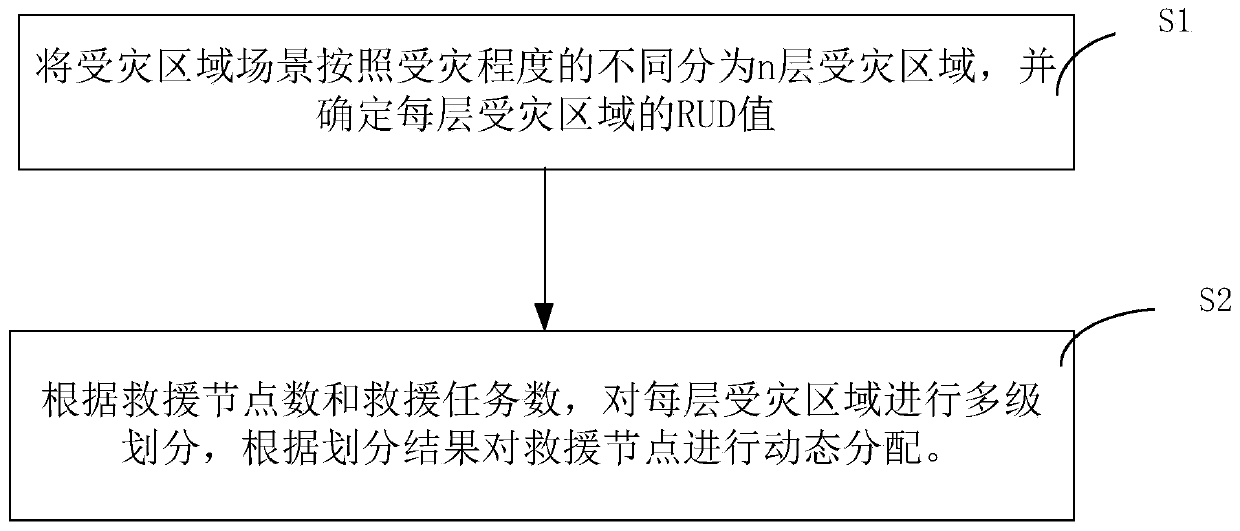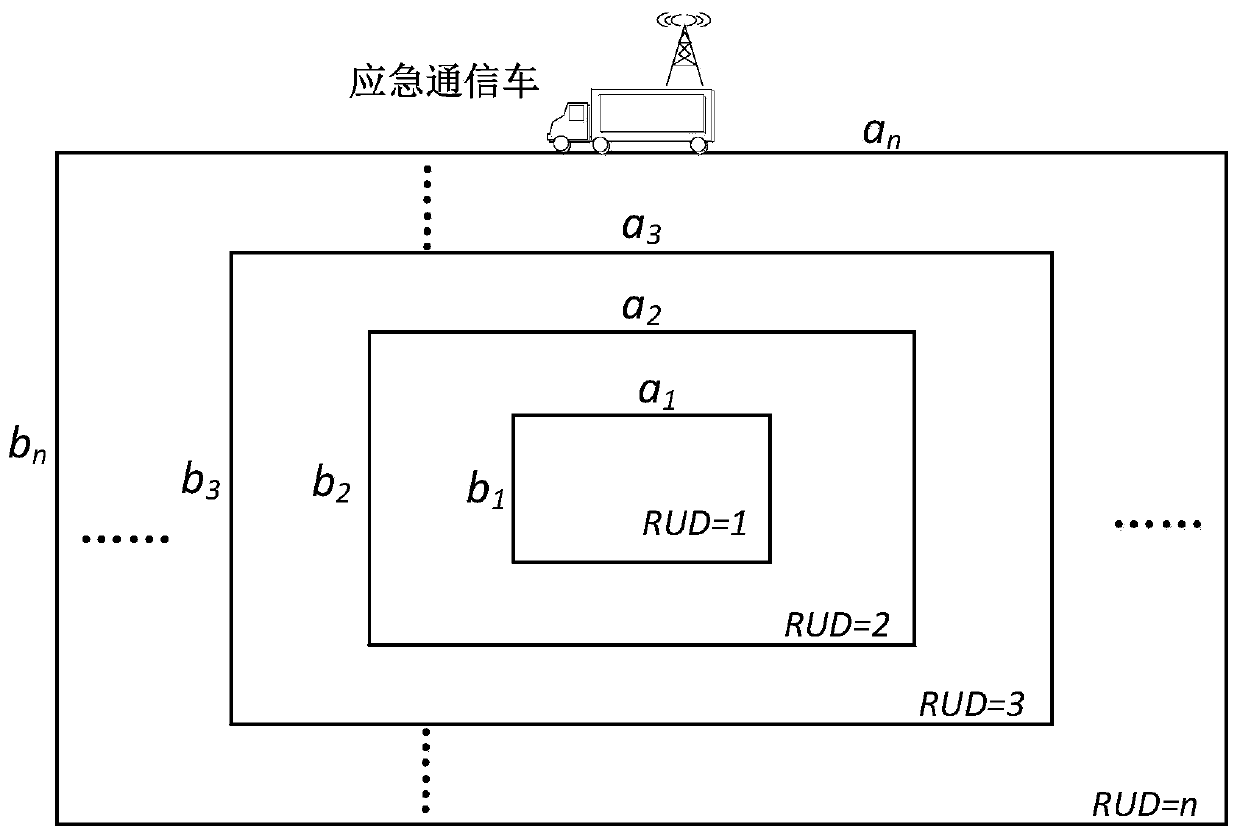Post-earthquake rescue worker four-quadrant distribution moving method and model
A rescuer and four-quadrant technology, applied in the field of emergency rescue, can solve the problems of not considering the data transmission efficiency of the emergency communication network after the earthquake, affecting the data transmission efficiency of the emergency communication network, and failing to achieve the rescue effect, so as to increase the effective survival time, The effect of saving rescue costs and reducing casualties
- Summary
- Abstract
- Description
- Claims
- Application Information
AI Technical Summary
Problems solved by technology
Method used
Image
Examples
Embodiment
[0117] In this embodiment, the scene division of the disaster-affected area after the earthquake is performed first. Without loss of generality, according to the different degree of disaster, the scene of the disaster area is divided into n layers, the closest to the epicenter is the first layer, RUD=1, and the long side of the rectangle is a 1 , the short side is b 1 . The present invention defines the RUD value of each region as 1, 2, . . . , n in turn. The epicenter is the center of the rectangle with RUD=1, and the areas with the same RUD value have the same emergency degree of rescue. Except for the area where RUD=1 is a rectangle, the other areas are all rectangular rings. As the backbone relay node of the emergency communication network, the emergency communication vehicle is parked at the midpoint of the outer long side of the rectangular ring with RUD=n, such as figure 2 shown.
[0118] In this example, use {RUD|a i ,b i} to mark the RUD and the long and short...
PUM
 Login to view more
Login to view more Abstract
Description
Claims
Application Information
 Login to view more
Login to view more - R&D Engineer
- R&D Manager
- IP Professional
- Industry Leading Data Capabilities
- Powerful AI technology
- Patent DNA Extraction
Browse by: Latest US Patents, China's latest patents, Technical Efficacy Thesaurus, Application Domain, Technology Topic.
© 2024 PatSnap. All rights reserved.Legal|Privacy policy|Modern Slavery Act Transparency Statement|Sitemap



